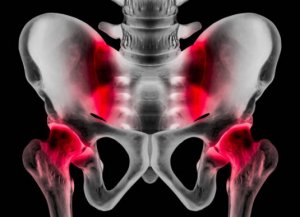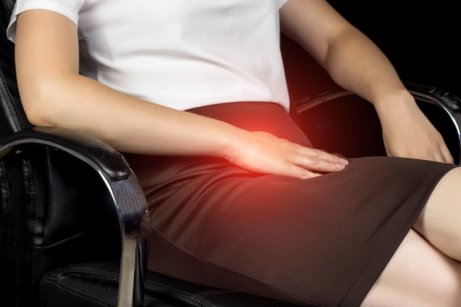Athletic Pubalgia: Causes, Symptoms, and Treatment

Athletic pubalgia is a problem that affects the groin region and is known by different names such as “groin injury,” “hockey hernia,” “hockey groin,” “Gilmore’s Groin,” “groin disruption,” or “sports hernia.”
The last name is due to the fact that mostly athletes suffer from it because they physically exert themselves. It’s especially common in athletes who perform exercises that require several repetitions or changes of direction or pace.
In this article, you’ll discover the causes of this condition, its signs and symptoms, and the best way to deal with it.
Causes
Athletic pubalgia occurs due to muscle overload after repeated and continuous movements. For this reason, it usually occurs in people who play sports.
However, there are some risk favors you should bear in mind to try to prevent this condition as much as possible.
Here are some of them:
- Poor physical preparation. If you aren’t in great shape due to a sedentary lifestyle, you may suffer from athletic pubalgia when you decide to start playing a sport or exercising.
- Not enough warm-up time. A way to reduce the risk of this condition is by warming up your muscles properly before working out or playing a sport. Doing it quickly and not in the right way can lead to athletic pubalgia. Therefore, you must take your time warming up.
- Anatomical characteristics. Trauma in the pubic area or physical condition can increase the risk of suffering from this condition.
When it comes to choosing a sport, it’s important to check these aspects (especially anatomical characteristics) so you don’t choose one that will make you suffer from many of the symptoms of “sports hernia.”
This article may interest you: The Benefits of Exercising
The Symptoms of Athletic Pubalgia

Athletic pubalgia is characterized by intense pain in the hip area that can cause difficulty moving.
Suffering from this condition is quite unpleasant. After all, its most characteristic symptom is pain in the groin and pubic area that can spread to the adductors and lower abdominal region.
Here’s how the symptoms of athletic pubalgia tend to develop:
- Pain before or after physical practice. This is the first warning sign that shouldn’t be confused with delayed onset muscle soreness or poor posture. The pain may be mild and usually goes away.
- Intense discomfort when you’re playing sports. After the first stage, pain manifests during training. The pain may be so intense you have to stop.
- Restricted movements. During this stage, you’ll feel pain even when you’re not working out or playing sports. The problem is that, at this point, you’ll notice that your movements are restricted to some extent.
As you can see, the pain progresses, warning that there’s muscle weakness. The way to solve this is by starting proper treatment.
This article may interest you: Sciatic Nerve Pain? Do These Stretches to Feel Better
Treating Athletic Pubalgia
There are different treatment options for this condition, depending on the stage it’s in.
Here are some of them:
- Strengthening and stretching exercises. They help strengthen the muscles involved in athletic pubalgia. These exercises will be a part of the rehabilitation program, which will include physical therapy, osteopathy, and electrostimulation.
- Anti-inflammatory drugs. If the pain is severe and causes interruptions in sports practice, these drugs are used to relieve pain.
- Specific warm-up exercises. People who suffer from athletic pubalgia must do specific warm-up exercises to prevent this problem from becoming chronic.
- Surgery. If your case is severe, your doctor may recommend surgery to reduce pressure in the area and relieve pain.
As you’ve seen, this is a common problem in athletes. Therefore, if you play a sport, we recommend you go see your doctor if you feel any pain in the groin area. Early diagnosis will allow you to treat this condition, which can prevent severe and debilitating pain.
All cited sources were thoroughly reviewed by our team to ensure their quality, reliability, currency, and validity. The bibliography of this article was considered reliable and of academic or scientific accuracy.
- Ahumada, L. A., Ashruf, S., Espinosa-de-los-Monteros, A., Long, J. N., Jorge, I., Garth, W. P., & Vasconez, L. O. (2005). Athletic pubalgia: definition and surgical treatment. Annals of plastic surgery, 55(4), 393-396.
- Taylor, D. C., Meyers, W. C., Moylan, J. A., Lohnes, J., Bassett, F. H., & Garrett JR, W. E. (1991). Abdominal musculature abnormalities as a cause of groin pain in athletes: inguinal hernias and pubalgia. The American journal of sports medicine, 19(3), 239-242.
- Zoga, A. C., Kavanagh, E. C., Omar, I. M., Morrison, W. B., Koulouris, G., Lopez, H., … & Meyers, W. C. (2008). Athletic pubalgia and the “sports hernia”: MR imaging findings. Radiology, 247(3), 797-807.
This text is provided for informational purposes only and does not replace consultation with a professional. If in doubt, consult your specialist.








